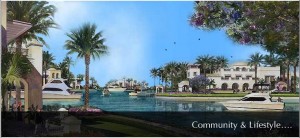According to a report on NPR, population worldwide is moving to cities. This is not a new trend; cities have always been centers of opportunity, but now that population threatens to overwhelm capacity it is more important than ever to build them right.
While some countries are building new cities from scratch, places that will “win” are those that already have infrastructure and are making best use of it. As Harriet Tregoning, D.C.’s planning chief pointed out at a panel discussion at the National Building Museum, even in this recent recession, communities that did best were those that are “dense, mixed-use places.”
As part of the Washington metropolitan area, Montgomery County has long recognized that it faces a growing population, but only recently have we thought about new ways to handle that growth.
We’ve already made some good decisions that will serve us in the future. Setting aside the Agricultural Reserve as inviolable has left it to develop emerging value for local farming. Focusing growth at Metro stations has stanched sprawl, created job and housing choices, and built the local economy.
Current planning efforts–Bus Rapid Transit, the Purple Line, the Corridor Cities Transitway, community-specific design guidelines, urban park standards, even moving our record keeping to computers–will help County residents get where they want to go, define their communities, and get the information they need.
These are not greenfield planning efforts, but a thrifty use of infrastructure, information, and systems we already have. It’s an approach other cities are using as well. In New York, the wildly successful High Line park is layered on top of an old elevated rail line, turning an eyesore into an asset. The Digital City initiative is using technology to deploy existing data in ways that improve New York’s functioning and communication with its residents. Cities around the world are establishing bike share programs and thereby creating a new transportation system.
It’s squeezing stuff in–local parks above ground, a corner of sidewalk turned over to a bike dock, threading new cable through existing channels–that ironically, doesn’t feel like constriction, but feels like opportunity.

GK
Is the challenge most difficult for jurisdictions like Montgomery? It’s true that movement to cities has been going on for a very long time, and within that movement a counter tidal effect of movement outwards to less denser parts of the city.
Mature cities have the issue of how do they keep themselves attractive and relevant. The same conditions, age and density, are attributes that affect this issue negatively and positively. SOme cities have figured out how to leverage those characteristics to their benefit.
The middle suburbs are now mature enough to conjure up all of the negative connotations of age and density without the ability to leverage those same characteristics. These are regions in flux and the movement to cities you describe is most difficult to politically and infrastructurally manage.
DC has no options but to look forward. Counties like Montgomery will tend to be stuck between to propositions, a more bucolic past and more urbanized future.
claudia
Change is inevitable and a fresh look is invaluable, which is what NYC has done by repurposing rail lines, piers and manufacturing buildings to create a new kind of city.
Montgomery, and any suburban county, may not have heavy urban infrastructure, but it is ludicrous to say we don’t have room for transit, bike routes, or multifamily mixed use development.
In the past we’ve had the option to stick to our strictly suburban profile, but we risk becoming mediocre (a terrible fate for a county full of A students!) if we don’t respond exuberantly to change.